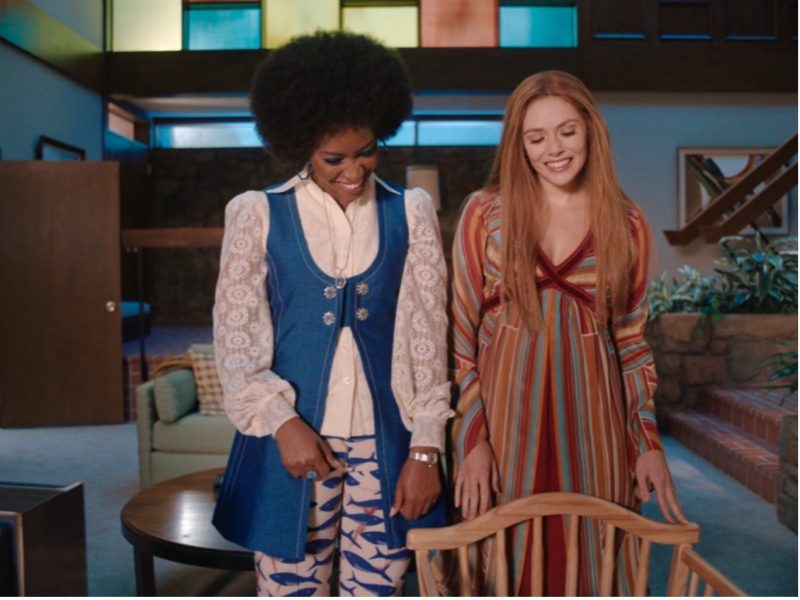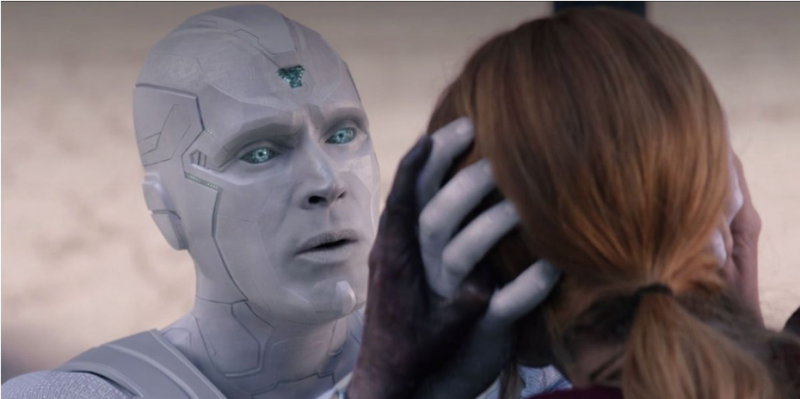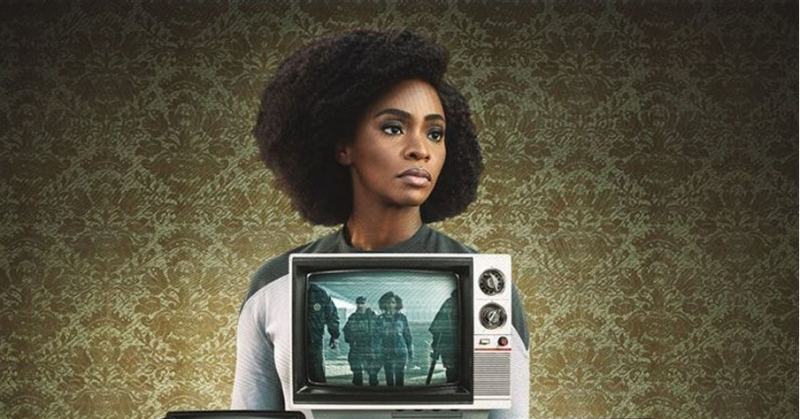Photo credit: bleedingcool.com
WandaVision is the Marvel Disney+ original series following Wanda Maximoff (Elizabeth Olsen) and her A.I. love interest Vision (Paul Bettany) following the events of 2019 film Avengers: Endgame.
Original promotional material showed Wanda and Vision as characters in cheesy American sitcoms throughout the decades, residing in the eerily perfect town of Westview. I spent the first few episodes admiring fashion trends and sitcom homages from each decade, as well as the creativity of the show’s writers. I was late to the party, watching the first half of the show in one long binge-watching session before watching them religiously every week. However, even whilst able to click immediately onto the next episode, I found the series to be a slow starter with no huge plot reveals until quite a while in. If you are yet to watch it, first of all stop reading as there are major spoilers ahead, and I would also advise you stick with these first few episodes as they still make for an entertaining watch with payoff occurring later on.

Although WandaVision forms part of the Marvel Cinematic Universe, a franchise including twenty-three interconnected films, viewers needn’t watch every single one in order to understand it. Although some supporting characters are pulled from other MCU films, for example a now-grown Monica Rambeau from Captain Marvel (Teyonah Parris), and Antman agent Jimmy Woo (Randall Park), the show makes it easy or unessential to figure out their backstories. Knowledge of the main Avengers films is somewhat essential to understanding Wanda’s story thus far, as not only do Vision and her brother, Pietro, die during these films, but the concept of the ‘Infinity Stones’ is mentioned regularly.
A Show About Grief
WandaVision comes to represent grief, with some Marvel ‘science magic’ and action scenes thrown in for good measure. The concept itself displays the hallmarks of excellent writing, using superheroes to tell a universally human story of love and loss. It transpires that Wanda had unwittingly created a replica of the life she had wanted with Vision in the initial ‘denial’ stage of grief, at the expense of an entire town of people enslaved as background characters. The show poses the question of what would happen if we had to choose to let go of loved ones who have passed away, and concludes that if we had the power, most would do the same as Wanda.

At the show’s emotional conclusion, Wanda quite literally chooses to let go of Vision and the future they had dreamt of together, destroying the ‘hex’ over Westview, outside of which her copy of him cannot survive, along with their children and suburban home. Clarity of this message, however, is somewhat hindered in its use by Marvel, a studio seemingly obsessed with bringing characters back from the dead. Whether via time travel (Gamora), asexual reproduction (Groot), a good old fashioned they- weren’t-really-dead (Nick Fury, amongst others), or any other excuse imaginable, Marvel finds ways to reuse its deceased characters so often that it’s lost all shock value.
Even in this show about letting go, its poignance is ruined with the introduction of a white version of Vision, a reconstruction who may or may not be the ‘real’ him. Created one episode from the end, he flies off into the unknown to be brought back if needed, denying audiences a final goodbye. Despite some brilliant naturalistic acting performances from the cast, portraying real and raw human emotion amidst CGI superhero battles, Marvel fails here to close the deal.
The Future of Women in the MCU
Following controversy surrounding the unearned ‘girl power’ scene in Avengers: Endgame, during which a handful of female characters got together for a dedicated minute-or-so of screen time in a heavy-handed attempt at feminism, WandaVision represents hope. Wanda is given real depth to her backstory and an updated ‘Scarlet Witch’ costume from the hypersexualised comic book version. Both ‘good guys’ and ‘bad guys’ are played by, well, not always guys. Agatha makes for a truly intriguing antagonist with her own backstory, and her casting as Kathryn Hahn, known primarily for comedy, was a stroke of genius particularly in the earlier sitcom-style episodes.
Kat Dennings’ Darcy Lewis becomes somewhat of a peripheral character as the series progresses, but her presence along with Teyonah Parris’ Monica Rambeau on the S.W.O.R.D team investigating Westview is essential. Including multiple women with their own agency and distinct personalities and ditching the ‘one strong woman’ quota, WandaVision swerves well clear of the narrative of Wanda’s harmful emotional instability being fixed by men, and shows development since the blatant tokenism of Avengers: Assemble, with its grand total of one relevant woman (Black Widow).

Monica Rambeau (Teyonah Parris) is one to watch next, the brilliantly portrayed S.W.O.R.D agent who begins to develop her own set of powers during the events of the show. She is set to stick around for the next phase of the MCU, and quite rightly so. Monica is portrayed throughout not only as the aforementioned ‘strong woman’ of Marvel films’ past, but once again has her own story and is shown to be intelligent, inventive and empathetic to a fault. Her inclusion as a BAME character will contribute to a more diverse future MCU, which has been improving somewhat steadily in recent years, but still has a long way to go.











